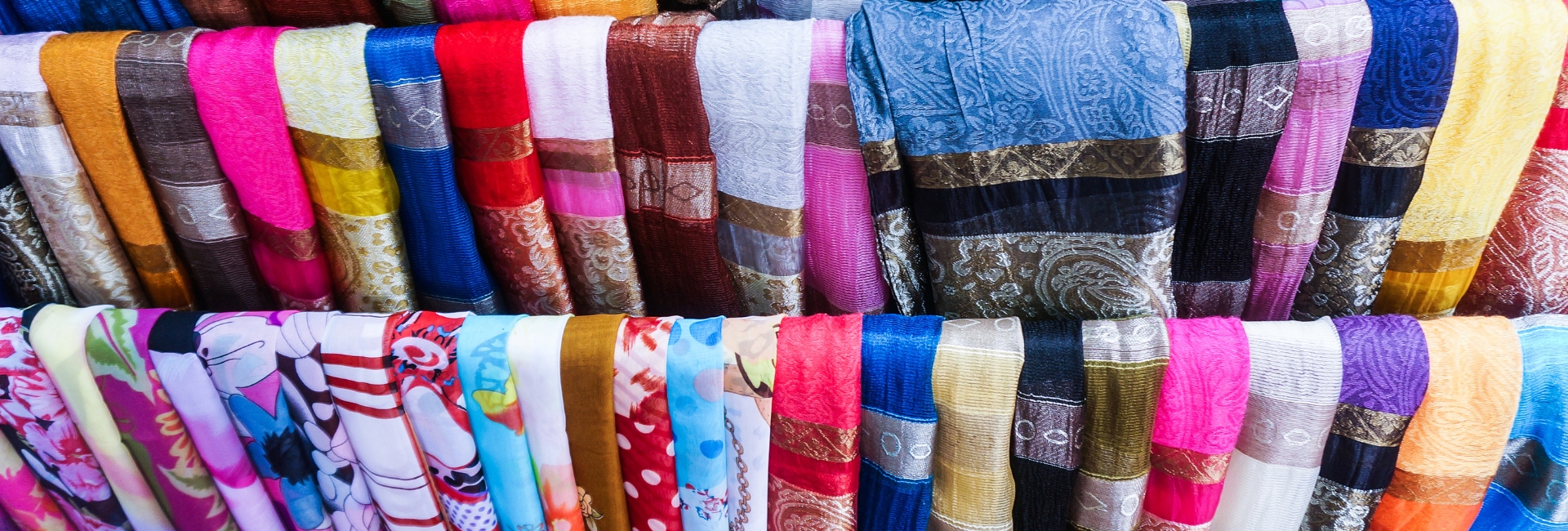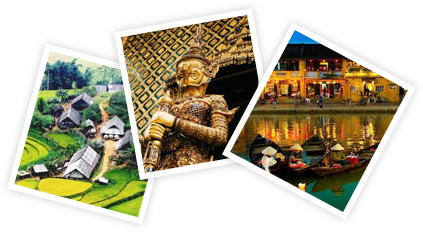Located at 28 Nguyen Tat Thanh Street in Hoi An, about 1 kilometer from the center of Hoi An Town, Silk Village is a hidden gem in Hoi An that maintains the tradition of silk weaving. In this comprehensive travel guide, we’ll explore the fascinating history and significance of the Hoi An Silk Village, uncover the must-see attractions and immersive experiences that await you, and provide essential planning tips to help you make the most of your visit.
What do you know about Hoi An Silk Village?
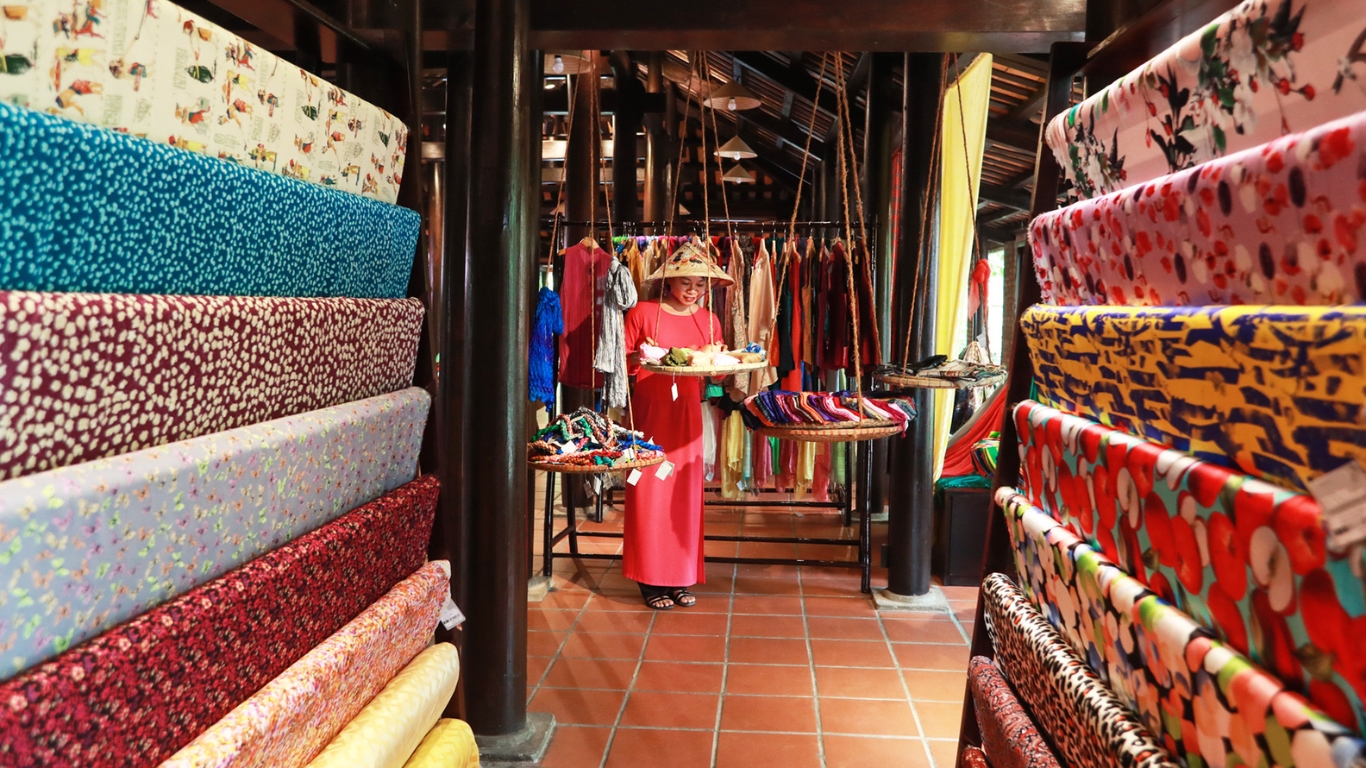
As one of the oldest handicraft villages in Hoi An, the Hoi An Silk Village dates back over 300 years to the 15th century. During this storied era, the village served as a vital center of silk production and trade, with Hoi An functioning as a thriving port that shipped the region’s exquisite fabrics to markets around the world. Established to revive the time-honored weaving and textile traditions of the Champa and Dai Viet peoples who once inhabited this area, the Hoi An Silk Village stands as a living testament to the rich cultural legacy that has been intricately woven into the fabric of this historic destination.
Hoi An Silk Village was once a thriving hub for silk production, with local families passing down the art of silk-making through generations. The village’s skilled artisans used techniques like sericulture (silkworm cultivation) and silk weaving to create exquisite fabrics that were highly sought after both domestically and internationally. This rich heritage is still evident today, as the village continues to showcase its time-honored silk production methods.
Time flows with the development of the modern world, the traditional silk-making craft is gradually in decline. Facing with that, the Quang Nam Silk Joint Stock Company has undertaken a concerted effort to revitalize the Hoi An Silk Village. Through their restoration and preservation initiatives, the once-fading village has been transformed into an increasingly popular and attractive destination for tourists seeking an authentic cultural experience.
What can you expect when coming?
At the Hoi An Silk Village, you can immerse yourself in the captivating process of silk production, from cultivating silkworms to intricate weaving demonstrations by skilled artisans. Beyond not only a tourist attraction, here is what you can expect when coming:
1. Visit the traditional “ruong” house of the village
As you explore Hoi An Silk Village, you’ll have the opportunity to step inside the traditional “ruong” houses, which are the iconic architectural style of the region. These beautiful structures, with their intricate wooden carvings and tiled roofs, offer a glimpse into the daily lives of the village’s residents. You’ll be able to learn about the history and cultural significance of these unique dwellings.
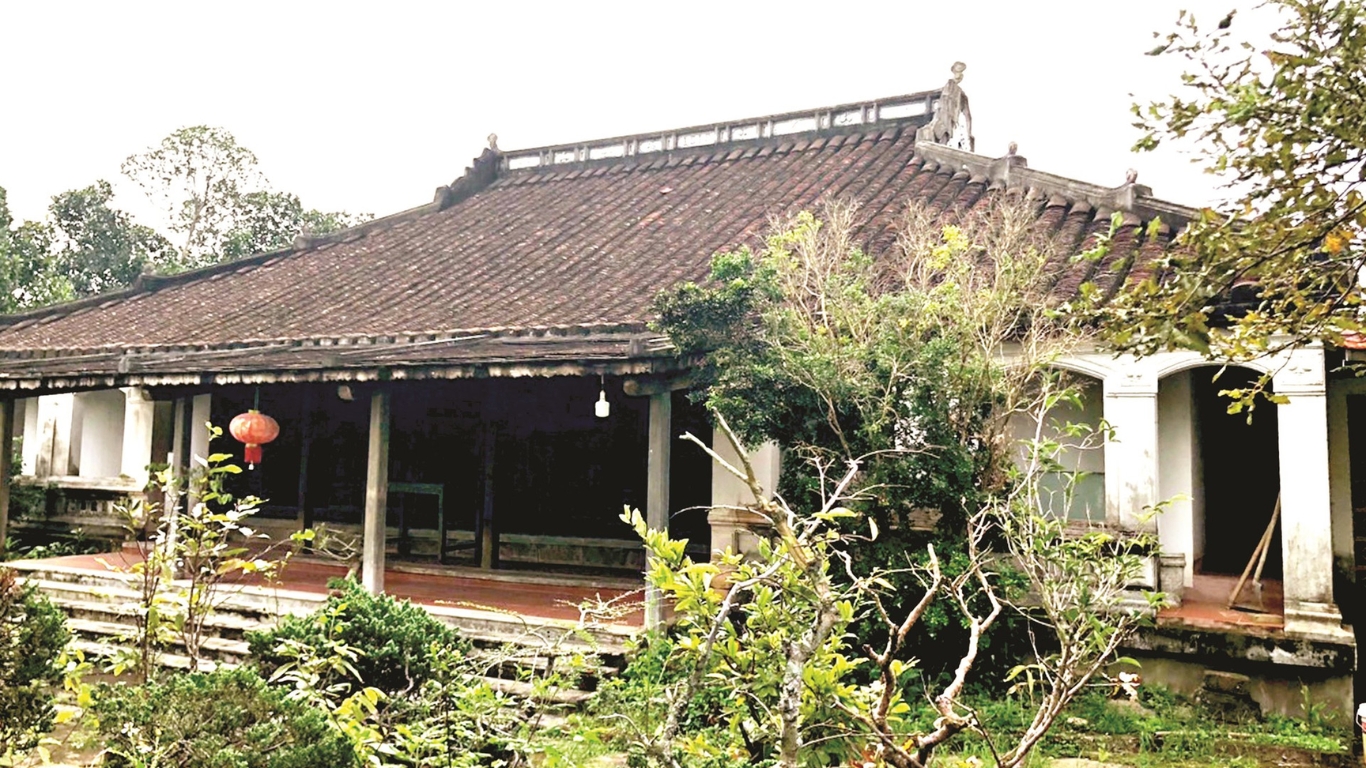
Ruong house in Hoi An
2. Admire and get your own best Ao Dai
One of the must-do experiences at Hoi An Silk Village is to admire and even get your own custom-made Ao Dai, the traditional Vietnamese long dress. The village’s skilled tailors are renowned for their expertise in designing and crafting these elegant garments, using the finest silk fabrics. You can watch as the tailors work their magic, and even have an Ao Dai made to your exact measurements and preferences.
3. Strolling around the ancient mulberry garden
One of the most serene and picturesque areas of Hoi An Silk Village is the ancient mulberry garden. This 300-year-old Champa mulberry garden and Vietnamese traditional mulberry garden to study about the raw material of those products. There you can learn about 40 kinds of mulberry, and silkworm breeds, and their life cycle. Come to the silkworm rearing house, you can see the silkworm cocoons; learn how farmers feed the silkworms, how the silk is unraveled from the cocoons, and even handpick mulberry for silkworms yourself.
These lush, verdant gardens are the foundation of the village’s silk production, as the mulberry leaves are the primary food source for the silkworms. As you stroll through the garden, you’ll be surrounded by the peaceful rustling of the leaves and the gentle flow of the river, truly immersing yourself in the tranquil atmosphere of the village.
4. Immerse in the showroom of silk products with the traditional costumes of 54 ethnic groups
Hoi An Silk Village boasts an impressive showroom, where thousands of textiles and and various completed costumes are exhibited. There you will see silk fabrics in many colors with different patterns, and learn how to differentiate between pure silk and artificial silk. You can admire a collection of 100 old costumes by 54 ethnic minority groups in Vietnam displayed in ancient houses. And there is a gallery of ao dai, traditional Vietnamese silk clothing for women, as well. You will be astonished by the elegance and nobility of those products.
From intricate silk paintings and embroidered textiles to luxurious scarves and accessories, the showroom offers a comprehensive display of the village’s artisanal craftsmanship. Visitors can browse the collection and purchase unique souvenirs to take home.
5. Learn how to make and distinguish real silk in Cuu Dien weaving loom
One of the highlights of a visit to Hoi An Silk Village is the opportunity to learn about the intricate process of silk production in Cuu Dien weaving loom. You can get a glimpse into the making process of Quang Nam’s traditional silk and Cham people’s brocade cloths. If you are really interested in silk products there, artisans will advise you how to choose the fine silk and even offer embroidery and textile products for your purchase.
Visitors can participate in hands-on demonstrations, where they’ll learn how to cultivate silkworms, extract the silk fibers, and even weave the fabric themselves. Additionally, you’ll learn how to distinguish between genuine silk and imitations, ensuring that you can make informed purchases during your visit.
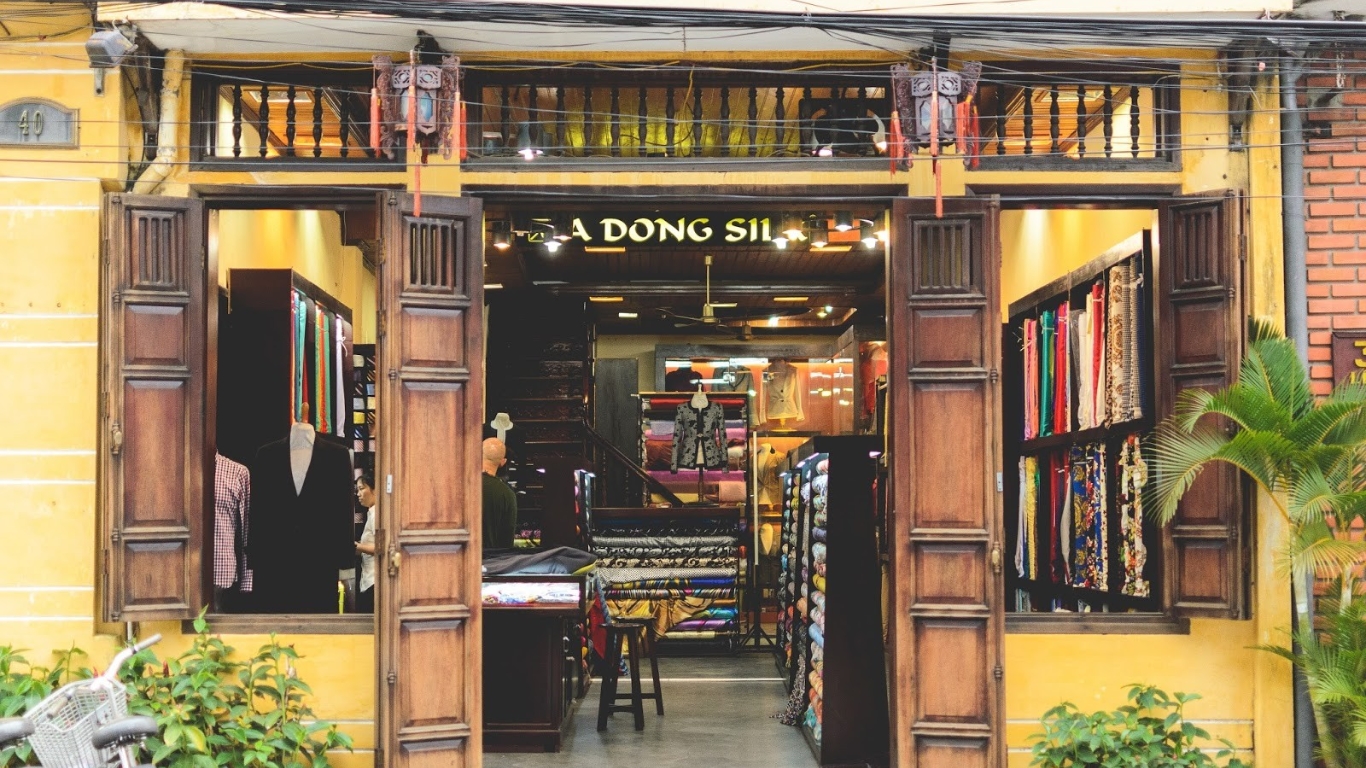
Don’t forget to get your own Ao Dai in Hoi An
6. Enjoy Hoi An specialties in the buffet restaurant
After a day of exploring the wonders of Hoi An Silk Village, you can indulge in the delicious local cuisine at the village’s buffet restaurant. Serving up a variety of Hoi An specialties, such as the famous Cao Lau noodles and Banh Mi sandwiches, the restaurant provides a delightful culinary experience to complement your cultural immersion.
Besides Silk Village, Hoi An also has various attractions awaiting you, you can visit our best-seller Central Vietnam tour to Hoi An for your travel list:
- Classic Central Vietnam 5 Days
- Hidden Beauty Central Vietnam 6 Days
- Hidden Charms Of Hoi An & Luang Prabang 8 Days
Helpful Travel Information Before Coming
Open time & Entrance Ticket
- Open time: Daily from 8:00 AM to 5:00 PM, with the last entry at 4:30 PM.
- Entrance ticket: VND 50.000 (Around US $2)/per ticket
Hoi An Silk Village Tour
Moreover, you can enjoy a quick or long tour of Hoi An Silk Village, depending on your requirements. You can contact with tour or travel companies for booking these tours below:
Quick Tour
Time: 8 AM – 5 PM daily
Price: 100,000 VND/ticket
Duration: 45 minutes with a guide
On the quick tour, visitors will get a brief introduction to the process of making Hoi An silk. Tourists will also have the opportunity to experience all stages of weaving like a genuine artisan.
Extended Tour
Time: 9 AM – 2 PM daily
Price: 560,000 VND/ticket
Duration: 4 hours with a guide
The extended tour provides a more in-depth exploration of the techniques and processes involved in silk production. Visitors will receive hands-on guidance from local artisans as they try their hand at weaving silk. After the immersive experience, guests will be served a meal featuring traditional dishes and local specialties at a restaurant within the village.
Tips for Enjoying the Best Tour to Hoi An Silk Village
- Plan your visit early in the day to avoid the crowds and take advantage of the cooler temperatures.
- Wear comfortable walking shoes and bring a hat or umbrella to protect yourself from the sun.
- Bring a small backpack or purse to carry any purchases you make during your visit.
- Familiarize yourself with the tour options and choose the one that best fits your interests and schedule.
- Consider booking your tour in advance to ensure availability, especially during peak tourist seasons.
- Be respectful of the local customs and traditions as you explore the village.
Hoi An Silk Village is a living museum of mulberry, silkworms, tools, and methods of Champa-Dai Viet textile and garment. Traveling there will give you an in-depth look at the history of this traditional career. If you find silk weaving appealing, you may also interested in other traditional careers from this country, as Vietnam is famous for having a variety of traditional careers.
Thuy Dang – From Indochina Voyages team

